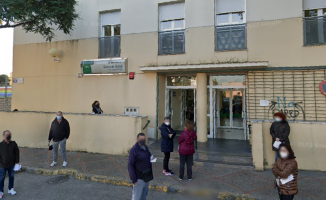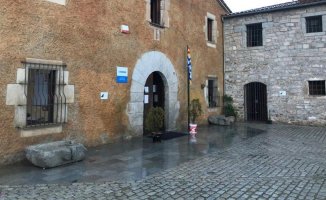Even miracles can have an explanation. But that is the least of it in Antakya and other pulverized Turkish towns, where several children and adults are being rescued more than four days after the earthquake. Something more than a drip, which circumvents the rule that survive beyond 72 hours, is almost miraculous.
The rescue of at least a dozen minors yesterday has raised the spirits of the rescue teams, also motivated by the already visible international cooperation. Sometimes qualitatively important, although not quantitatively.
Meanwhile, the official death toll is already above 20,000 in Turkey and 3,000 in Syria. Specifically, at least 20,665 people have died in Turkey alone, where the number of injured is 80,088 people. In neighboring Syria there is evidence of 3,553 deaths and 5,276 injuries, for a total of 24,218. This is not the earthquake of the century just for these two countries. Some seismologists have pointed out that an earthquake of such intensity (7.7) had not been recorded in such a populated area for more than a hundred years.
Yesterday, in Antakya, a teenager went from despondency to rubbing his eyes, after rescuers pulled his four brothers and their parents alive from the rubble – one after another.
Meanwhile, an inconsolable cry served not only to locate a baby, but also its mother.
Something similar was happening further south, in Samandag, where specialists from Istanbul were rescuing Yagiz – ten days old, half underground – and his mother.
Emotional images, capable of rivaling that of the 13-year-old boy who, when he was rescued three days ago, still had his parakeet in his hand, which he had successfully protected from the rubble.
All this helps to explain why these days, in devastated cities, children have disappeared from the streets, kept like gold in cloth in shelters and safe places.
Likewise, Spanish troops from the Military Emergency Unit (UME) managed to detect with geophones and then rescue alive, yesterday, two children aged six and two and their mother in the province of Gaziantep.
Another child was saved in Kahramanmaras, another in Adiyaman and another in Diyarbakir, in these last two cases with their respective mothers, always more bruised.
"I haven't slept in four days to get you out," his mother told Adnan, a teenager just brought back into the sunlight.
A moved crowd had to interrupt the applause because they scared a child taken from the clutches of death and who only calmed down when they gave him trinkets.
In the aforementioned Antakya, smiles reappeared when a girl, who had survived four days under the rubble, suddenly became afraid at the sight of an injection needle.
In ancient Alexandretta, where rescue professionals were scarce during the first days, yesterday they also located a group of nine survivors and in the afternoon they had already managed to get six out. After avoiding being crushed to death, they again narrowly escaped drowning, due to the rise in sea level. In the same city a marriage was saved.
On the other hand, more than seven hundred Syrians who died in Turkey have been repatriated to be buried in Syria.
Antakya, twelve years ago, began to stand out less as a tourist pole than as a transit point for Islamist militiamen and war reporters. Not coincidentally, the last anti-Bashar al-Assad stronghold is now just across the border – at times, a fence – in Idlib province.
Iraqi-born journalist Waleed Safi lived in Antakya for two years before rushing back this week for work. “Half of my friends could be dead”, he confesses to La Vanguardia. Safi remembers the old city as a place where he could “speak Arabic with the whole world”, that he felt “so far from Turkey”.
Lastly, a builder was arrested yesterday when he tried to fly from Istanbul to Montenegro. His best-known building, the Rönesans de Antakya residence, with 250 floors, has become the worst cage of this tragedy. It fell like a domino, trapping more than 700 residents, including a Ghanaian footballer.
However, by not collapsing, as in most cases, it has also become the main source of hope for rescue teams. Thus opening the opportunity to honor its name, Renaissance, for a few.













